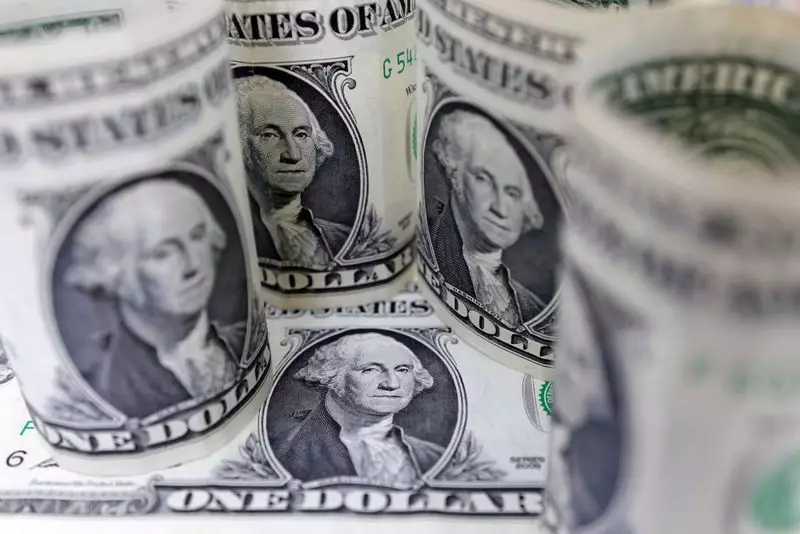The financial markets are no strangers to volatility, particularly during significant political events like the U.S. presidential elections. As election day approaches, the dynamics of currency trading shift drastically, characterized by fluctuations driven by shifting voter sentiment, polling data, and trader speculation. This article delves into the current state of the currency markets as they stand on the cusp of a pivotal presidential election, analyzing the underlying factors that contribute to the behavior of currencies such as the U.S. dollar against other major players in the forex market.
A Defensive Stance on the Dollar
As the election unfolds, a notable pullback in the value of the U.S. dollar indicates a cautious sentiment among traders. This is especially relevant when considering that many market participants had previously tilted their expectations toward a Republican victory, bolstered by Donald Trump’s aggressive economic policies. However, recent polling trends have unveiled a tightening race, creating uncertainty about the election outcome. The dollar found itself under pressure, registering a decline of up to 0.76% against the euro, reflecting shifting sentiments among voters and traders alike.
The dollar index, which gauges the U.S. currency’s performance against a basket of key international currencies, remained relatively stable at 103.91, albeit after experiencing a pronounced dip to 103.67 the previous day—its lowest point since mid-October. This volatility can be attributed to the unexpected surge in support for Democrat Kamala Harris in traditional Republican territories, indicating a potential shift in electoral dynamics that could favor the Democrats.
Polling data plays a critical role in shaping trader expectations, and the recent uptick in support for Harris has caused a ripple effect across financial instruments. Remarkably, while some betting platforms, like Polymarket, continue to indicate Trump as the frontrunner, others reveal a changing tide, which in turn impacts market sentiment. The volatility is underscored by the fact that traders are anticipating the possibility of a Harris victory, leading to projections that the dollar could depreciate modestly in the event of a Democratic win. Analysts have emphasized the importance of the upcoming election results, noting that any delay or disputes over vote counting will likely exacerbate the uncertainty, maintaining heightened levels of market volatility.
This fluid situation is accentuated by increased implied volatility in euro/dollar options, reflecting traders’ wariness amid the impending electoral results. Financial instruments sensitive to political outcomes, such as the Mexican peso, are also experiencing significant fluctuations as traders brace for potential economic implications of Trump’s protectionist policies should he prevail.
The Cryptocurrency Landscape
Interestingly, the cryptocurrency market is navigating its own set of challenges during this political climate. Bitcoin has seen a slight uptick, increasing by 1.6% to approximately $68,140, after hitting a one-week low. The juxtaposition of traditional currencies with cryptocurrencies presents a fascinating dilemma, particularly as Trump is often regarded as having enacted more favorable policies for digital currencies compared to Harris. As such, investors in the cryptocurrency space are left to speculate on the implications of potential electoral outcomes and their effect on digital asset prices.
Market analysts are keen to highlight that, despite the uncertainty surrounding the election results, scenarios around Trump and a potential “red wave” remain bullish for the dollar, while a “blue wave” could lead to a significant decline. Observably, a Harris win does not necessarily equate to negative outcomes for the dollar over the medium term, refocusing attention back on macroeconomic fundamentals instead of purely political narratives.
In addition to the immediate effects of political decisions, central bank policies also play a pivotal role in shaping market expectations. As central banks worldwide prepare for rate cuts, including the upcoming decisions from the Federal Reserve, the Bank of England, and others, the focus remains on the economic indicators that justify these shifts. The recent weaker-than-expected jobs report, revealing fewer job additions than anticipated in October, raises questions about the resilience of the U.S. labor market, adding further layers of complexity to currency valuation.
Meanwhile, the Australian dollar has remained relatively stagnant, hovering at $0.6589 and not far from its recent lows. Reserve Bank officials have reiterated the importance of maintaining a restrictive policy stance until they gain confidence in sustainable inflation trajectories, indicating that global currency markets will continue to be influenced by interconnected economic policies.
As voters prepare to cast their ballots, the currency markets remain at the mercy of political uncertainties and macroeconomic signals. Through this turbulent landscape, traders and analysts will be closely monitoring the unfolding electoral results and their ramifications for currencies, thereby illustrating the delicate interplay between politics and economic frameworks in shaping market dynamics. The forecasts remain unclear, but one thing is certain: the aftermath of the U.S. presidential election will leave an indelible mark on the financial markets for months, if not years, to come.

